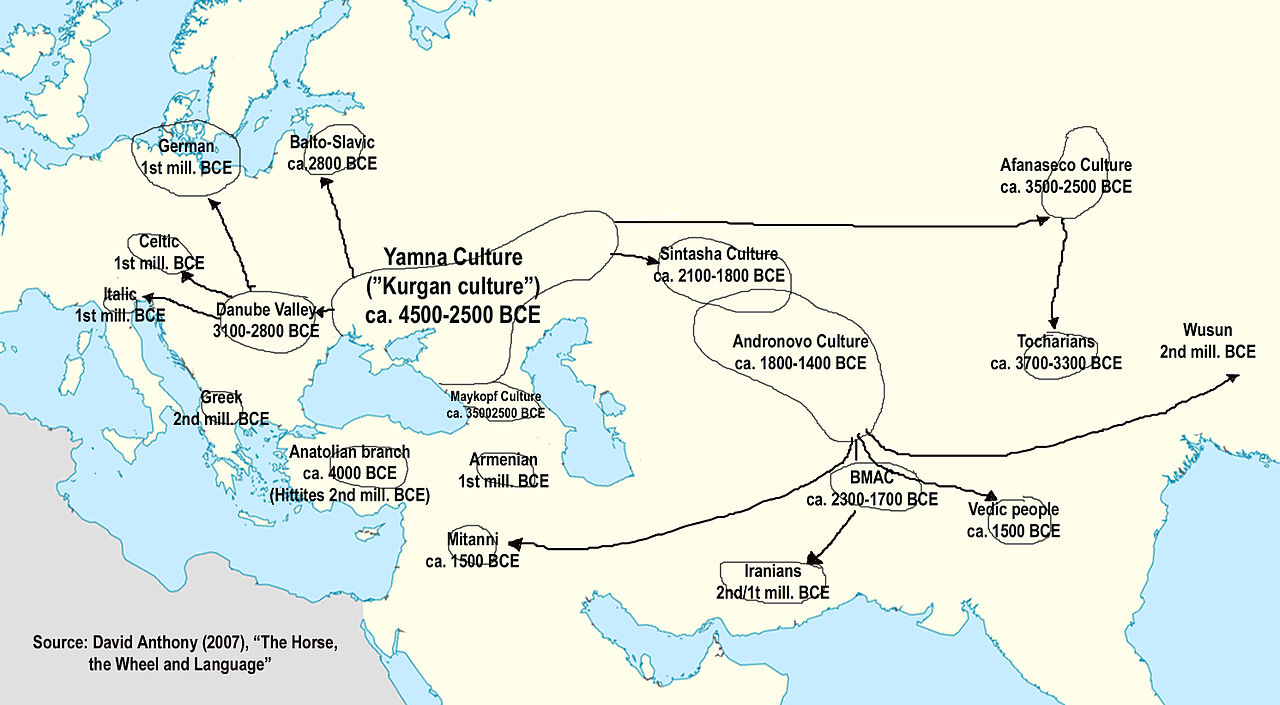Germanic Mythology
Background: The PIE People
(Click to Expand)
(Click to Expand)
Pieces of PIE
PIE culture, short for Proto-Indo-European, originated thousands of years ago in the steppe country north of the Black Sea. Or, by an alternate theory, it all began in Anatolia. Either way, the PIEs spread far and wide, providing the common origin to Germanic, Baltic, Celtic, Slavic, Italic, Hellenic, Anatolian, Persian, and Hindu cultures and their respective mythologies.
The spread of culture over many centuries is related to the evolution of language groups. Both of these are affected by the migration of population groups, the separation of groups into isolated tribes, or the trade, conquests, and intermarriages that merge population groups together. By a variety of means, PIE culture spread westward into Europe, eastward into Persia and India, and southward into Anatolia and Greece, changing and evolving along the way.

Some PIE tribes lost contact with each other. Some disappeared entirely. Others traded ideas with surrounding peoples they encountered. Their languages and beliefs drifted and changed. Their stories changed. Tribal religions added new gods, emphasized different gods, or merged multiple gods into one. Tribal mythologies developed a fascinating variety of stories, including Norse, Greek, Celtic, and Roman, but if we dig deep enough, we can find echoes of those original PIE tales.
The spread of culture over many centuries is related to the evolution of language groups. Both of these are affected by the migration of population groups, the separation of groups into isolated tribes, or the trade, conquests, and intermarriages that merge population groups together. By a variety of means, PIE culture spread westward into Europe, eastward into Persia and India, and southward into Anatolia and Greece, changing and evolving along the way.

Proto-Indo-European People migration routes by Joshua Jonathan
Some PIE tribes lost contact with each other. Some disappeared entirely. Others traded ideas with surrounding peoples they encountered. Their languages and beliefs drifted and changed. Their stories changed. Tribal religions added new gods, emphasized different gods, or merged multiple gods into one. Tribal mythologies developed a fascinating variety of stories, including Norse, Greek, Celtic, and Roman, but if we dig deep enough, we can find echoes of those original PIE tales.


Comments